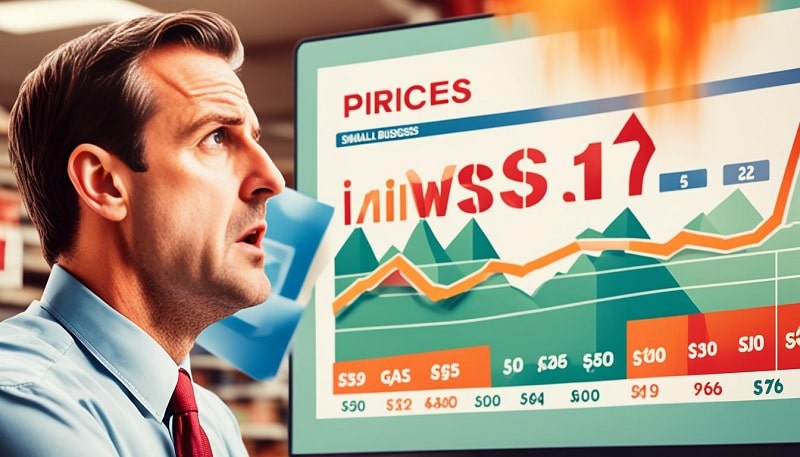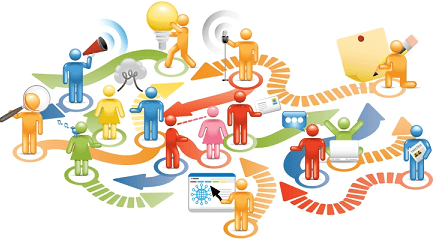
The mood for small businesses in the United States is now quite gloomy. Small business optimism has fallen to an 11-year low. The fears of inflation are causing worry, hanging over entrepreneurs' plans and dreams. These uncertain times challenge the creativity and resilience of American businesses.
Small businesses are the heart of America's busy markets. But now, they face rising expenses and an unsure economy. The threat of increasing interest rates is real. Even small hikes in rates can greatly impact their journey towards growth, scalability and stability. The tough environment makes running businesses harder and clouds the future economic outlook.
The effects of this drop in confidence are felt everywhere. From small shops to big startups, business owners, shoppers, and investors are all navigating through these cautious times. This scenario is driven by rising mortgage rates and the ongoing threat of inflation.
Exploring the Root Causes of Diminishing Small Business Confidence
The confidence of small businesses is dropping due to many reasons. It's linked to economic indicators like treasury yields, stock market trends, and changes in prices for oil and gold. These are tied to inflation rates and the overall economic activities.
Such conditions create hardships for small businesses. They lead to higher costs and change how the market behaves.
Potential causes for a reduction in small business confidence:
- Higher treasury yields mean pricier loans for small businesses. This makes it hard for them to grow or keep running as is.
- A shaky stock market makes everyone nervous about the economy. This affects how much people invest and spend.
- When oil and other commodity prices jump, it costs more to move goods and make products. This adds to the marketplace concerns.
Business trends like these tell small business owners to find new ways to do things. With inflation on the rise, the struggle for growth and money gets tougher.
Small business folks need to grasp these economic signals. They help predict troubles and make plans to keep businesses safe. Looking at things this way helps find paths to stay strong. This is key in a world that seems against small businesses.
Small Business Optimism Plummets Amidst Economic Challenges

The economic scene has changed a lot after global events, affecting small businesses deeply. We get important clues from the economy's direction and trends. These help us understand the new shape of things.
Key Economic Indicators Point to Pessimism in the Marketplace
When we look at economic signs, we see a clear drop in hope among small businesses. Treasury note yields, which show what might happen in the economy, are falling a bit. This suggests a shaky future.
The prices of necessary items like oil and gold are also up and down. This reflects the market's current instability. Small business owners are, therefore, very careful now.
Business Trends in the Post-Pandemic Era - Shifting Landscapes
The post-pandemic world has changed how small businesses work. They're now aiming for long-term survival, rethinking their plans to fit the new normal. This period is marked by embracing new tech and focusing more on digital ways to connect with customers. It's clear how recent global happenings have influenced business moves.
| Economic Indicator | Pre-Pandemic | Current |
|---|---|---|
| Treasury Note Yields | 2.5% | 1.9% |
| Gold Prices | $1500/ounce | $1800/ounce |
| Oil Prices | $60/barrel | $70/barrel |
This side-by-side data shows us how economic changes are challenging. It emphasizes their effect on small business optimism. To succeed in the post-pandemic world, staying updated and flexible is crucial.
Small Business Optimism Hits 11-Year Low as Inflation Fears Won't Go Away

Small business optimism has fallen to its lowest in a decade. This shows how tough the economy is right now. Inflation worries are a big reason for this feeling. It's based on past data and new events that affect small businesses and their growth hopes.
Historical Data and Current Trends in Small Business Sentiment
To understand small business feelings, we need to look at past and present data. Experts like Fannie Mae and the Mortgage Bankers Association give clues about mortgage rates. These rates impact how small businesses see the future. Looking back at tough times helps us get why they're cautious today.
The Impact of Inflation on Small Business Operations and Growth
Inflation really affects how small businesses work and grow. Costs for things they need go up. This includes paying for people and running the business. Overcoming these challenges is key. They aim to keep going strong and find ways to grow, despite the pressure.
Here are some main issues small businesses face:
- Rising material costs and their effect on production
- Increase in interest rates impacting financing options
- Adjusted consumer pricing strategies to offset increased operational costs
Small businesses are fighting hard against economic challenges. They play a big part in the economy. It's important to keep an eye on the economy and how these businesses feel. This helps support them to recover and grow.
Understanding the Implications of Inflation on Small Businesses

Small businesses across the US are feeling the heat from rising inflation rates. This situation calls for smart changes to keep up. With the cost of goods and services going up, and what people can spend changing, it's key to know how inflation affects us now and in the future.
Analyzing Recent Inflation Rates and Their Direct Effects
Recent jumps in inflation have hit small businesses hard. They're dealing with higher costs for materials and running their operations. Plus, people have less money to spend. This eats into profits, making it tough for businesses to stay afloat without adjusting their finances.
Strategies Small Businesses Are Implementing to Combat Inflation
Small businesses are getting creative to tackle inflation. They are making their supply chains better, changing prices, and using smarter, cheaper ways to work. These steps help them stay competitive even when times are tough.
Implications of inflation on small businesses:
- Supply Chain Examination: Deeply looking into and changing supply chains to avoid issues and find less expensive materials.
- Pricing Adjustments: Changing prices wisely to match what's happening in the economy, keeping customers happy.
- Technology Integration: Using tech to make work smoother and cut down on costs we don't need.
| Strategy | Purpose | Expected Outcome |
|---|---|---|
| Supply Chain Optimization | Reducing costs and ensuring consistent supply | Stabilization of operating expenses |
| Dynamic Pricing | Adapt prices to current economic conditions | Maintain customer base and margin |
| Technology Implementation | Improve efficiency and cut operational costs | Increased profitability despite financial pressure |

Small businesses today face many challenges due to economic uncertainty. These concerns shape how they operate and plan for the future. They affect owners of small businesses throughout the United States every day.
Economic uncertainty often comes from events around the world and at home. Things like global conflicts can mess up supply chains. Changes in trade policies and economic decisions in our own country add more challenges.
All these issues make things harder for small businesses to stay ahead. When financial experts like the Federal Reserve talk about interest rates, everyone listens closely. Their decisions can really affect the market.
| Impact Factor | Effect on Small Business | Level of Uncertainty |
|---|---|---|
| Geopolitical Tensions | Supply chain disruptions, increased costs | High |
| Trade Policies | Volatile export/import costs | Medium |
| Economic Policies | Regulatory changes, tax implications | Medium |
| Federal Reserve Decisions | Interest rate impacts on loans | High |
Small businesses must understand the complex world of economic shifts. Staying informed on these issues is crucial. It helps them adjust and reduce the risks of economic uncertainty.
How Rising Mortgage Rates Influence Small Business Optimism

In the vast landscape of the American economy, rising mortgage rates mean more than just changes in the housing market. They signal shifts that affect many areas, including small businesses. When mortgage rates go up, along with inflation worries, it impacts small businesses in big ways. It's not just about higher costs. Changes in mortgage rates affect how people spend money and how businesses run.
Higher mortgage rates make running a business costlier, especially for those paying for commercial spaces. This increase can alter how businesses plan for the future. At the same time, customers might cut back on spending because their own mortgage payments have gone up. This can mean less money coming into small businesses. Small business owners must be very careful with their finances and plan wisely in these times.
The rise in mortgage rates is a clear concern for financial experts and small business owners alike. This increase causes caution within the small business community. It makes businesses think hard about what the future holds. Being cautious may lead to holding back on new projects or expansions. While being careful is important, it can slow down growth. Small businesses might focus more on getting by than on growing big.
How do you think the current climate of small business pessimism and concerns about inflation will impact the future of entrepreneurship?








